The TomTag feelings tag-o-meter is a visual feelings thermometer that can be used to support the development of all the skills required for good emotional intelligence.
It can help children to understand and communicate their feelings. By linking with a visual reminder of appropriate actions and strategies, they can learn how to manage those feelings too.
Regular use of this type of visual scale helps children to recognise the causes and triggers for their feelings and emotions. They can work out ways to help themselves improve their responses and handle things better in the future.
Let’s get started
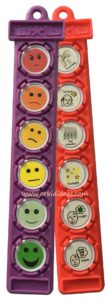 At the start of the school day it’s helpful to know how a child is feeling to assess their readiness for learning today. Use the feelings thermometer as a way for them to quickly and easily communicate this to you.
At the start of the school day it’s helpful to know how a child is feeling to assess their readiness for learning today. Use the feelings thermometer as a way for them to quickly and easily communicate this to you.
You might find it useful to provide a list of further options (like the red tag shown here) to help you identify the cause of any problems. For example, are they sad because they are hungry or tired, too hot or too cold, are the surroundings too noisy or bright?
Once any issues have been dealt with appropriately the child will be more able to access and engage with their learning.
What’s different
Are you expecting a change to routine, an unusual event or a visit to a new place today? Use the same approach to rate how comfortable the child is about this. If they are frightened, worried or anxious you can try explaining more about the reasons for the change or event or what they can expect to happen during the day or the visit.
Encourage the child to think about whether the strength of their feeling is in proportion to the situation. Does their reaction match the level of the problem? If not, discuss strategies they can use to deal with their feelings and talk about what a more appropriate response might be.
Get down to work
Before starting a task or activity, ask the child to rate their anxiety or confidence level about what they have to do. This information can help you to decide what support they might need to be able to complete the task successfully or it can open a discussion about whether their anxiety is proportional and realistic for the task faced. For example, are they:



How was that?
Revisiting the scale once a task, activity or event has finished offers an opportunity to reflect back and learn from it. Was their actual experience better or worse than they had expected it to be? How would they feel if they were now faced with the same event again?
If they were initially very anxious but with support were able to succeed, should this make them more confident about the next time they face the same task or a new one?
Another good time to check in with the feelings thermometer is after school, particularly as they may keep emotions locked up until they get home. Just as at the start of the school day, it’s a quick and easy way to communicate how they’re feeling and alerts you to any issues that have occurred during the day that might need further investigation or discussion before settling down to homework or evening activities.
What happened there?
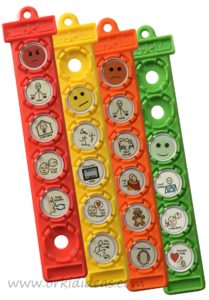 Sensory overload, changes to routine, difficulties processing information, social interactions or being tired or hungry are all common triggers for anger or challenging behaviour.
Sensory overload, changes to routine, difficulties processing information, social interactions or being tired or hungry are all common triggers for anger or challenging behaviour.
Getting a child to think about and try to understand what made them angry or prompted their behaviour begins to develop their emotional self-management skills. Using a feelings diary can be a good way to identify patterns of behaviour and incident triggers and plan for minimising stress at key points.
Encourage the child to use a feelings scale to start recognising how they feel or what their impulses are when their anger level starts to build. Set up some different coloured tags for each level like the ones shown here. Use each list as a reminder of suitable calming ideas they can try to help prevent their progress up the anger/stress scale and bring their feelings under control.
This technique can also be used to identify and respond to inappropriate behaviour from over excitement or a high arousal state.
Just saying
Children not only need to understand and interpret their own feelings, it’s important for them to be able to recognise the feelings of other people around them too.
When a child is familiar with using the feelings tag-o-meter to rate their own feelings and emotions, they can build their skills in appreciating other people’s feelings too.
As a parent, carer or teacher, you might want to let the child know that you are pleased with their work or attitude today. They may not have behaved well and you want them to understand that makes you sad. Reinforcing your words by showing them on the scale how you feel helps them develop their ability to recognise and interpret verbal and non-verbal emotional signals.
Let’s be friends
 You can take a similar approach when dealing with social interactions between the child and their classmates, friends and family. If there’s been a disagreement or incident, try using the feelings scale to help those involved communicate with each other about what happened, how they are feeling and how they might be able to better control their actions in the future. Our School Timetable sticker pack (included in the kit “I know what to expect at school”) has a number of useful behaviour-related symbols that would help with identifying positive strategies in these situations.
You can take a similar approach when dealing with social interactions between the child and their classmates, friends and family. If there’s been a disagreement or incident, try using the feelings scale to help those involved communicate with each other about what happened, how they are feeling and how they might be able to better control their actions in the future. Our School Timetable sticker pack (included in the kit “I know what to expect at school”) has a number of useful behaviour-related symbols that would help with identifying positive strategies in these situations.
The more practice a child has at acknowledging and recognising their feelings, using different coping techniques and appropriate communication strategies, the more relaxed and content they can be knowing that they have the skills to cope. A child who can identify his own emotions is more likely to be able to identify the emotions of others. Children who can see a situation from the view point of others are more able to engage in problem-solving and other social activities.
This guide is available as a free downloaded using the link below. The guide for this topic also covers the information in our post Understanding feelings and emotional intelligence.
-
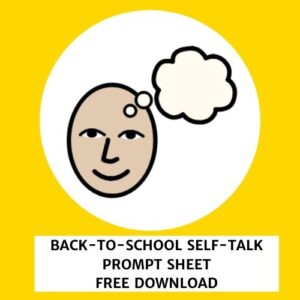
Back-to-School Self-Talk Prompt Sheet
-
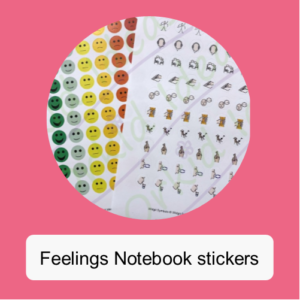
Extra sticker sheets for Feelings Notebook
-

Feelings & Emotions Sticker Pack
-
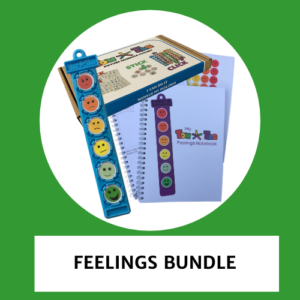
Feelings Bundle
-
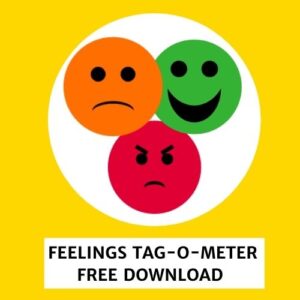
Feelings Tag-O-Meter
-
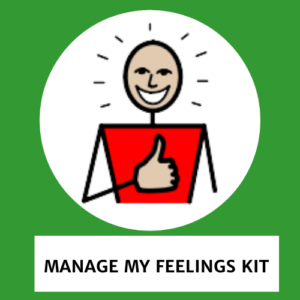
I Can Do It Manage My Feelings Kit
-
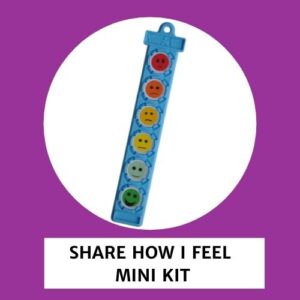
I Can Do It Share How I Feel Mini Kit
-

I Know What To Expect – My Vaccination Mini Kit
-

Phoebe’s Green Christmas Kit in collaboration with Embracing Arts & Christmas For Kids
-

Phoebe’s Green Christmas Sticker Pack in collaboration with Embracing Arts & Christmas For Kids

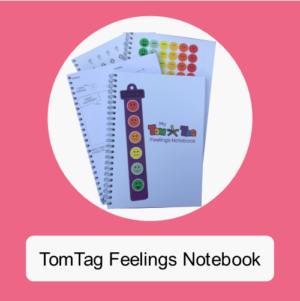
[…] How to use a TomTag feelings tag-o-meter to develop the skills for good emotional intelligence […]